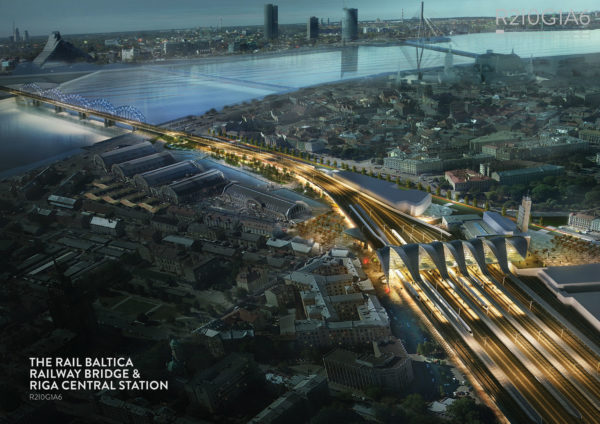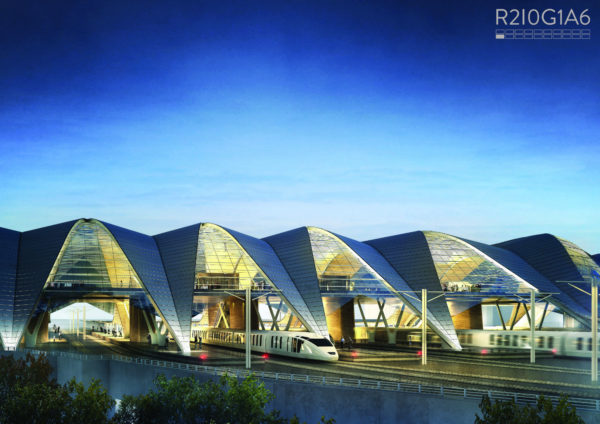When looking into Latvia as a destination for innovative meetings and international business collaborations, the construction of Rail Baltica ads a substantial element to accessing to and travelling around Latvia and it’s Baltic neighbor countries.

Beyond the obviously immediate gain of improved connectivity, it offers a myriad of immanent other benefits. Rail Baltica is a greenfield rail transport infrastructure project with the goal to integrate the Baltic States in the European rail network — here are some key figures:
- The largest Baltic-region infrastructure project in the last 100 years
- Fully operational by 2026 (before the Winter Olympics) after a 10-years construction period
- For both passenger and freight traffic
- Length: 870 km
- Environmentally friendly — powered by electricity, produces less noise and vibration
- Max. Speed: 249 km/h (passengers), 120 km/h (freight)
- More than €5 bn investment in the region
- Implemented by Estonia, Latvia, Lithuania
- Part of the EU’s North Sea Baltic TEN-T corridor
- Financed by EU (CEF), Estonia, Latvia, Lithuania
- Provides intermodality/multimodality (connecting different railway gauges)
(All facts taken from Rail Baltica website)
Here is a selection of more visionary angles and future mobility aspects:
- The project will add the last missing piece to complete the European Railway System.
- European cities to be connected in the immediate framework will include Warsaw, Berlin and Helsinki.
- The new Rail Baltica station at the Riga International Airport is the first high-speed rail to air connection centre in the Baltics and the most ambitions infrastructure project in the Baltics to date linking a multimodal railway station with an airport passenger terminal.
- The first of the cargo terminals to be developed on the Rail Baltica route, the Kaunas Intermodal Terminal (KIT), has now been directly linked to European rail infrastructure. From here, KIT will be the Easternmost point of the European rail network, which can soon be reached by freight trains via European standard gauge rail. Kaunas is the second largest city in the South of Lithuania and the completion of works on this stretch will allow continuing successfully developing the project towared Latvia and Estonia.
- Businesses will be able to use Rail Baltica’s freight transport and multi-modal logistics opportunities to move goods throughout Europe, while services industries will be able to quickly and easily work across the entire region to take advantage of new growth opportunities.
- Among the 10 Benefits from the Rail Baltica Project Implementation listed on the website, a somehow unexpected aspect is the claim of provision of a New Value Platform for digital innovation – this is what it says:
“Although widely perceived as somewhat conservative, the European railway industry is very keen to accommodate disruptive technologies though digitalization and development of intelligent transport systems (ITS). Digitalization, alongside de-carbonization, is consistently among the European Union’s key strategic priorities in the development of European cross-border transport connectivity. Innovative technologies such as smart data analytics, Internet of Things / Internet of Trains, next generation communication networks (both track-side and onboard), passenger data applications, sensor deployment and smart energy, among many other, will increasingly permeate all aspects of railway design, construction, maintenance, operation and supply chain development processes. Rail Baltica will, therefore, provide a new impetus to the rapidly developing start-up enterprise ecosystem in the Baltic States, creating new opportunities and promoting digital innovation across all stages of the project.”
On top of that, the project will generate 36 000 new job opportunities in its construction phases. With 85% of the funding for the project coming from EU funds, the region is poised to see huge economic benefits for a relatively small investment.

Open tenders:
All open tenders are published and accessible on the main website – guidance is provided to closed tenders there as well — with many opportunities for local companies and international alliances.
It is also worthwhile to look at the global cost – benefit analysis – where the total estimated costs of the project with 5.8 billion in all three countries are weighed against the measurable project socio-economic benefits – estimated at 16.2 billion euro – which will far outweigh national co-investments. Furthermore, it is assessed that the project would create a GDP multiplier effect worth an additional 2 billion euro. In addition, there will be substantial unmeasurable benefits (mostly of a catalytic nature) and considerable unmeasurable benefits from a strengthened Baltic business community to greater regional access to entertainment, culture or other services.
Finally some recent views shared by Kaspars Briškens, Head of Strategy and Development at the Rail Baltica joint venture, RB Rail AS, on the global railway review, where he explores some of the long-term benefits that the Rail Baltica project must achieve with the help of innovation, digitalisation and sustainable greenfield infrastructure development.

 Convention International I MICE News und Trends aus der MICE – Branche
Convention International I MICE News und Trends aus der MICE – Branche


